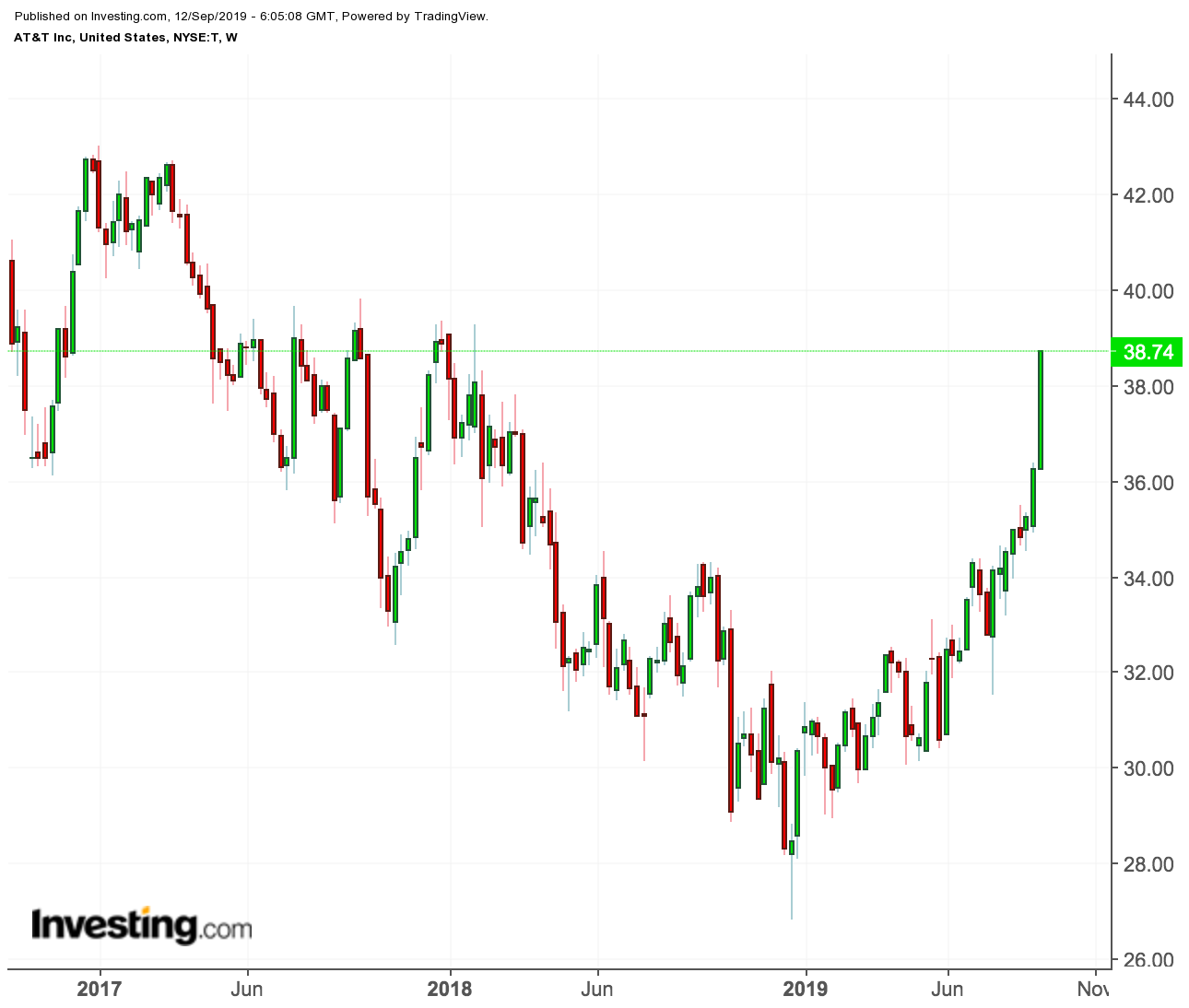America’s largest telecom operator, AT&T (NYSE:T), is seeing a rare revival this year. Its beaten-down stock is showing some pretty impressive signs of life.
Surging more than 35% since the start of the year, it has performed better than its close rival, Verizon Communications Inc (NYSE:VZ) (+7%) and the benchmark S&P 500 Index (+19.7%). Indeed, AT&T shares rose 3.1% yesterday, on their tenth straight day of gains, to close at $38.74.
But this comeback, which mainly reflects investors’ rush to buy dividend stocks at a time of falling interest rates, doesn’t solve the fundamental challenges this telecom conglomerate is facing: how to produce growth when its core operations are struggling and how to manage its huge load of debt.

AT&T’s dismal performance over the past five years is now coming under more scrutiny, prompting its largest investors to openly question CEO Randall Stephenson’s plan to transform the company into a modern media giant by acquiring large companies. While this strategy has grabbed headlines and made investment bankers rich, it’s also saddled AT&T with $186 billion of debt, making it the largest non-finance indebted firm on Earth.
Last week, Elliott Management Corp., a hedge fund with an activist agenda and a $3.2-billion stake in AT&T, criticised Stephenson for his blockbuster acquisitions, including its $85-billion deal to buy Time Warner assets last year. In a letter to the board, the hedge fund suggested some corrective measures to put the company on a sustainable growth path.
They include selling the loss-making DirecTV unit and the company’s wireless operations in Mexico, empowering the board to hold Stephenson’s team more accountable, and avoiding any more big M&A.
The proposed overhaul, which also includes a massive cost-cutting exercise, will make AT&T ready for the next generation of wireless networks, known as 5G, and improve its chances of succeeding in the streaming-TV market, where AT&T faces growing competition both from current market leader Netflix (NASDAQ:NFLX), and from deep-pocketed new players Walt Disney Company (NYSE:DIS) and Apple (NASDAQ:AAPL).
A Reliable Dividend Payer
This recent pressure from an activist investor and the fast changing dynamics of the telecom industry make AT&T a turnaround bet that could produce good returns for investors who have the stomach for a bumpy ride.
Luckily, there are some signs that the company is acting fast to switch tactics as it tries to protect its reputation as a reliable dividend-payer. AT&T stock is among the top 20 most widely held U.S.-traded companies among institutional investors, according to Bloomberg data — and this is mainly because the company has paid a growing stream of income for 35 consecutive years.
The latest signs of a potentially imminent turnaround came from the company’s Q2 earnings report in July when Stephenson showed that he wants to quickly get rid of low-revenue generating customers by increasing subscription fees for some services.
During the quarter which ended on June 30, AT&T shed a record number of video customers after raising rates for TV packages. The move helped AT&T meet expectations for profit, and produce extra cash to cover its dividends.
The company is also making headway on asset sales, with its recent divestment of a stake in video-streaming platform Hulu, and Time Warner’s real-estate in New York. These measures, combined, send a strong message to markets that Stephenson does have a plan, even before the prodding from Elliott Management.
Bottom Line
The rebound in AT&T’s stock this year is the result of a combination of factors, including high demand for dividend stocks, some improvement in its cash position, and the involvement of an activist investor who has a reputation for pushing change in troubled firms in order to shore up their share values.
But that recovery, in our view, doesn’t yet guarantee a sustainable turnaround, just because of the very complex nature of challenges AT&T is facing. For that reason, its stock remains a speculative bet.
